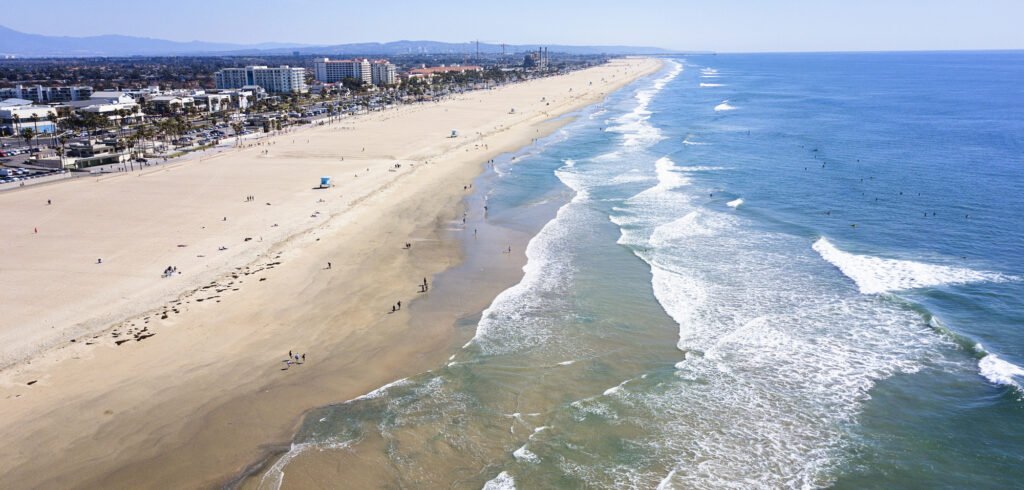Orange County Desalination Debate: Cost vs. Conservation
As dawn breaks over the Orange County coastline, the sun glistens on the waves, yet the tranquil scene belies a growing tempest that has enveloped the region. The proposal by Poseidon Water Co. to construct a $1.4 billion desalination plant has ignited fierce debate among environmentalists, locals, and water utility officials. Amid deepening climate concerns and rising water rates, the future of clean, affordable drinking water hangs in the balance—and the stakes couldn’t be higher.
Financial Implications of Desalination
With an estimated cost of five times that of traditional groundwater sourced from aquifers, the financial viability of the desalination plant is being placed under scrutiny. Experts predict that such a venture would be an extraordinary financial burden on residents already struggling with increased living costs.
The Economic Context
Dr. Ellen Moore, an economist specializing in urban water management at the University of California, states, “The proposed rates for desalinated water could exacerbate the existing inequalities in Orange County. A family already wrestling with rising food and housing costs may find it financially unfeasible to pay for this water.” Studies indicate that the cost of water could account for nearly 5% of a low-income family’s monthly budget. This raises alarm among local advocacy groups who fear that water shutoffs will surge as rates rise unknowingly.
- Current costs of desalinated water versus groundwater.
- Potential increases in utility shutoffs affecting low-income families.
- Impact of financial burdens on future generations in Orange County.
Environmental Consequences
The environmental impact of a desalination plant looms large as well. Local marine biologist, Dr. Lisa Trent, warns of severe repercussions for coastal ecosystems. “Desalination processes require large quantities of seawater and generate brine, a byproduct that can be detrimental to marine life if not managed correctly. This could pose an even greater threat to fish populations and biodiversity,” she explains.
The Pacific Ocean, a vital lifeline for many local communities, would bear the brunt of disproportionate environmental costs. A recent study by the State Coastal Conservancy found that nearly 40% of marine species in Orange County are already in decline. The introduction of such projects risks compounding these losses and eroding the fragile coastal ecosystem.
A Struggle for Sustainable Solutions
The warming climate further complicates this scenario. According to a report from the California Water Resource Board, droughts are becoming more frequent and severe, stressing the current water supply system. While some see desalination as an immediate solution, others argue for increased investment in conservation and efficiency initiatives.
Community Responses
Public sentiment is divided. Many community members express skepticism towards the desalination project. Residents from the Sierra Club, led by local activist Charming Evelyn, assert, “We don’t need to resort to such drastic measures when more sustainable options—like advanced water recycling and stormwater capture—are within our reach.” A community forum in early October yielded strong reactions; two-thirds of participants opposed the desalination proposal.
Long-Term Viability and Alternatives
Given the prevailing skepticism, continued discussions around alternatives remain crucial. Greater emphasis on water conservation practices, supplemented by advanced technologies for water purification, could provide viable solutions without the exorbitant costs associated with desalination. A recent survey conducted by the Orange County Water Authority revealed significant public support for these alternatives.
Dr. Alexander Chang, a recognized expert in environmental policy, advocates for innovative water management strategies: “Instead of pouring money into a single massive project, we can achieve much more by diversifying our approach, ensuring both the affordability of water and the health of our marine environments.” His words resonate as community members rally behind a vision of sustainability that extends beyond mere survival.
The Unseen Impacts
Behind the heated debates lies an often-forgotten yet critical issue: the human cost of rising water rates. An increasing number of families are facing disconnection notices and accumulating utility debt—consequences that disproportionately affect marginalized communities. Reports indicate that in 2019 alone, Orange County saw a 20% increase in water shutoffs compared to previous years.
With climate change underscoring water scarcity exacerbated by surging costs, local advocacy groups suggest that drawing attention to legislative reforms could provide immediate relief to those adversely affected. Proposed initiatives aim to limit utility disconnections, fund mitigation programs for low-income families, and bolster community-engagement efforts.
In the long view, the dialogue surrounding Orange County’s water future remains a complex interplay of cost, conservation, and community needs. Those engaged in this narrative express the overwhelming sentiment that the choices made today will reverberate through generations. For many, the question won’t merely be whether to build a desalination plant but how to navigate the treacherous waters of climate change in a way that ensures the lifeblood of Orange County remains accessible, sustainable, and equitable for all.





